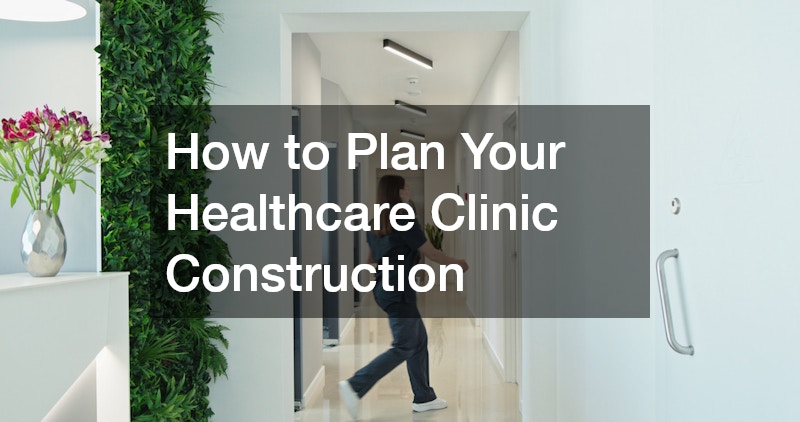
Building a healthcare clinic requires careful planning and execution to ensure the facility meets the needs of the community while adhering to industry regulations. Healthcare clinic construction is not just about erecting walls and installing equipment; it involves strategic decision-making related to design, staffing, and technology. This comprehensive guide outlines the vital steps you need to take to successfully plan your healthcare clinic construction project.
Video Source
With the right approach, you can create a functional and welcoming facility that enhances patient care.
The first step in planning your healthcare clinic construction is understanding the needs of the community you intend to serve. Research community demographics, health statistics, and existing healthcare services to identify gaps in care. Conduct surveys and focus groups to gather direct feedback from potential patients about what services they find most valuable. Engaging with local health professionals can also provide insights into prevalent health issues and the types of services that could be beneficial. This foundational understanding will guide your decisions on the size, layout, and services offered by your clinic.
Moreover, understanding community needs can help in estimating the patient volume and designing workflows that promote efficiency. A clinic that resonates with community needs may enjoy a higher patient turnout, which ultimately impacts its sustainability and success. It is also essential to keep local public health priorities in mind, ensuring that your clinic addresses immediate and long-term health challenges. Additionally, consider how demographic factors like age, ethnicity, and socio-economic status influence health needs. All this data can inform your decisions on service offerings, staffing requirements, and specialized equipment needed, laying a solid foundation for your construction project.
Once you have a clear understanding of the community's needs, the next step in your healthcare clinic construction project is budgeting and financial planning. A detailed budget will help you determine how much money is necessary for construction, staffing, equipment, and operational costs. You should account for various components, including land acquisition, construction materials, labor costs, and interior design. Utilizing professional cost estimation services can provide you with a clearer outlook on these expenses and assist you in making informed financial decisions. By establishing a good budget, you ensure that the project remains financially viable from inception to operation.
Furthermore, consider sources of funding, such as government grants, private investors, or loans from financial institutions. Aggregate your financial resources to create a safety net that can absorb unexpected costs during the construction phase. Financial planning also includes accounting for operating costs once the clinic opens; this involves estimating patient volumes and adjusting services based on financial feasibility. Consider consulting with financial advisors who specialize in healthcare to gain insights into sustainable financial practices. A well-rounded financial plan will not only guide your clinic construction but also set the stage for long-term success.
The design of your healthcare clinic plays a crucial role in operational efficiency as well as patient satisfaction. A well-conceived layout can vastly improve workflow, enhance patient experiences, and promote safety and accessibility. Working with architects and designers who specialize in healthcare will help you create an environment that fosters healing while adhering to regulatory standards. Be mindful of incorporating patient-centered design principles that prioritize comfort and privacy. Effective designs also include spaces for administrative functions, waiting areas, and examination rooms tailored to the specific needs of your services.
Involving stakeholders, including healthcare providers, patients, and administrative staff, in the design process can yield valuable perspectives. Gathering input can reveal unique considerations that may not have been initially anticipated, such as preferred room layouts or equipment needs. Effective clinic design should also consider future trends in healthcare technology and incorporate spaces for telehealth services or advanced diagnostic equipment. Your design should focus on adaptability, allowing for future expansions or alterations as community needs change. Ultimately, successful healthcare clinic construction hinges upon a thoughtfully curated design tailored to the demands of its users.
Moreover, ensure your design aligns with compliance regarding safety and health regulations, including ADA accessibility and local building codes. Engaging with regulatory bodies early in the design phase can help in minimizing issues that might arise later on. The significance of a compliant design extends beyond legalities; it also reflects your commitment to patient safety and quality care. Partnerships with engineers and healthcare design consultants can help streamline this process. A well-planned design will not only serve immediate requirements but also set a strong foundation for your clinic's long-term success and reputation within the community.
